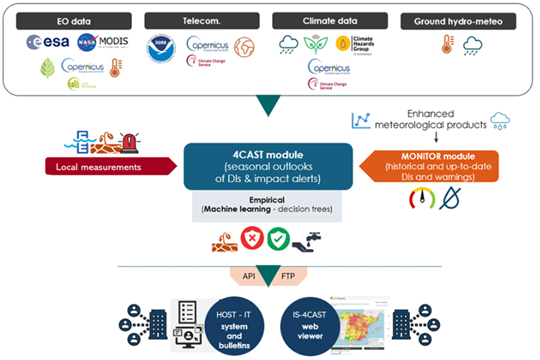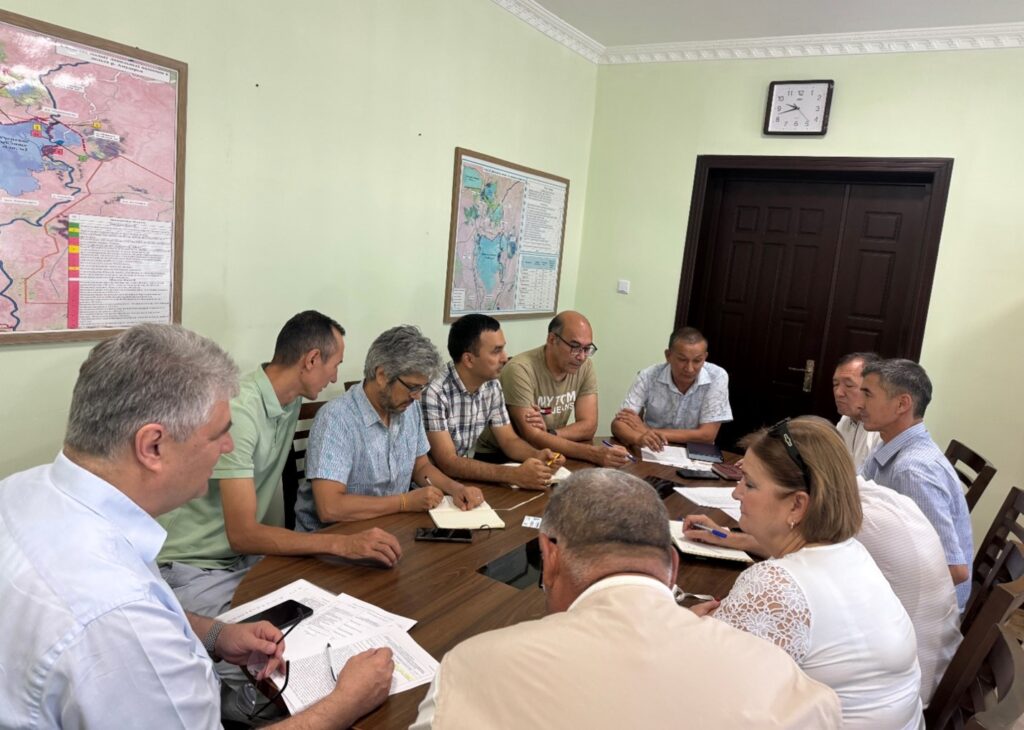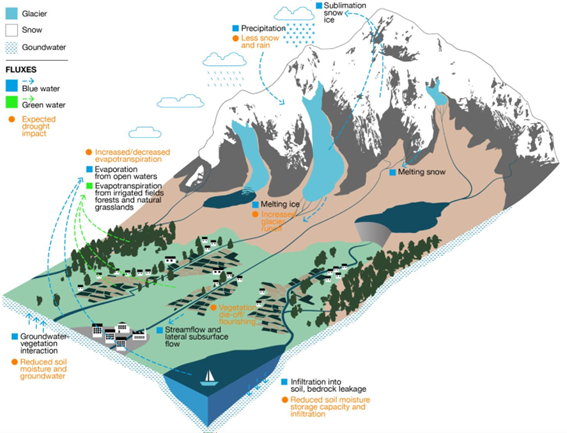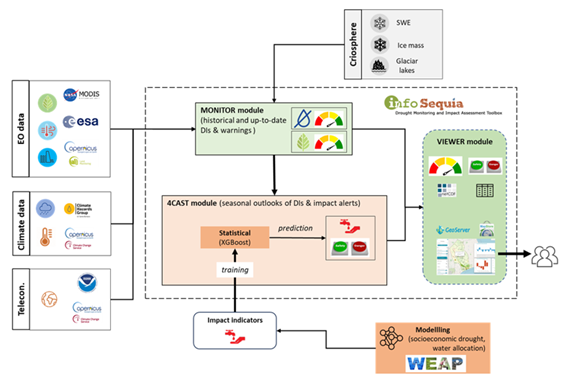El enfoque de FutureWater y Galayr es a la vez científicamente riguroso y contextualmente sólido, garantizando que el modelo de sequía desarrollado sea relevante a nivel local, sostenible y esté plenamente integrado con los sistemas nacionales existentes, como los de SODMA y NADFOR. El modelo combina enfoques descendentes (basados en datos, utilizando el aprendizaje automático) y ascendentes (informados por las partes interesadas), combinando datos de satélite, índices climáticos y conocimientos indígenas para desarrollar conjuntamente predicciones basadas en el impacto y desencadenantes consensuados para la acción anticipatoria.
Para el desarrollo de modelos de predicción de sequías y la transferencia de conocimientos, nos centramos en los siguientes pilares:
- Un plan de trabajo por fases que incluya evaluaciones de la capacidad institucional, desarrollo de modelos, validación, consultas a las partes interesadas y desarrollo de capacidades prácticas.
- Aplicación de modelos avanzados de predicción, desde ARIMA y regresión hasta técnicas más avanzadas de aprendizaje automático, sin perder de vista la facilidad de uso y la adopción institucional.
- Un fuerte énfasis en la transferencia de conocimientos, incluyendo programas de formación y el establecimiento de una plataforma colaborativa de intercambio de conocimientos utilizando la plataforma FutureWater Academy
- Un sólido plan de gestión de riesgos, que incluya estrategias de mitigación de la escasez de datos, la participación de las partes interesadas y el desgaste institucional.





